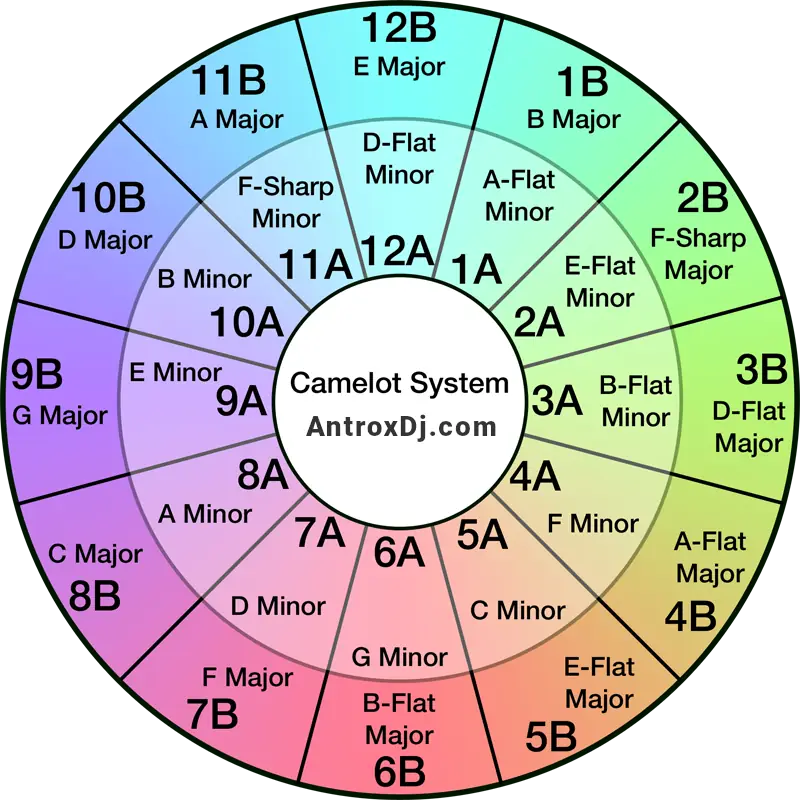As a DJ, creating seamless transitions and maintaining the energy of your set is a top priority. One of the most powerful tools to achieve this is harmonic mixing, which ensures that tracks blend not just rhythmically but melodically. At the heart of harmonic mixing lies the Camelot Circle, a game-changing visual tool for DJs.
What is Harmonic Mixing?
Harmonic mixing involves blending songs with compatible musical keys. This technique eliminates clashing harmonies and creates smooth, natural-sounding transitions. By matching or complementing the key of two tracks, you can enhance the musical flow and elevate the listener’s experience.
Understanding the Camelot Circle

The Camelot Circle, developed by Mixed In Key, is a simplified representation of the traditional circle of fifths. It assigns each musical key a number (1 through 12) and a letter (A for minor and B for major). Think of it as a clock face:
- Major keys are labeled as “B” (e.g., 1B, 2B, etc.)
- Minor keys are labeled as “A” (e.g., 1A, 2A, etc.)
How to Use the Camelot Circle
The Camelot Circle makes harmonic mixing intuitive. To create smooth transitions, follow these simple rules:
- Match the Key: Mix tracks with the same key (e.g., 8A to 8A)
- Move One Step: Transition to a neighboring key on the circle (e.g., 8A to 9A or 7A)
- Switch Between A and B: Transition between a major and minor key of the same number (e.g., 8A to 8B)
By following these steps, you can create mixes that feel natural and professional.
Practical Example
Let’s say you’re mixing a track in 8A (A minor). To maintain harmonic compatibility, you could:
- Mix into another track in 8A
- Transition to 7A (D minor) or 9A (E minor)
- Switch to 8B (C major) for a brighter, uplifting vibe
Why Harmonic Mixing Matters
Beyond technical precision, harmonic mixing adds emotional depth to your set. By carefully selecting keys that complement one another, you can control the energy, build tension, or provide moments of release. Whether you’re playing at a club, festival, or private event, harmonic mixing ensures that your set resonates with the audience.
Tools to Help You Get Started
Many DJ software platforms, such as Rekordbox, Serato, and Traktor, analyze and display the key of your tracks in Camelot notation. Additionally, Mixed In Key’s software is a popular choice for DJs who want to prepare their library for harmonic mixing.
Final Thoughts
Mastering harmonic mixing using the Camelot Circle is an essential skill for any DJ who wants to elevate their craft. It’s not just about playing great tracks; it’s about creating a cohesive and unforgettable musical journey. So, the next time you plan your set, let the Camelot Circle guide you to harmonic perfection!
